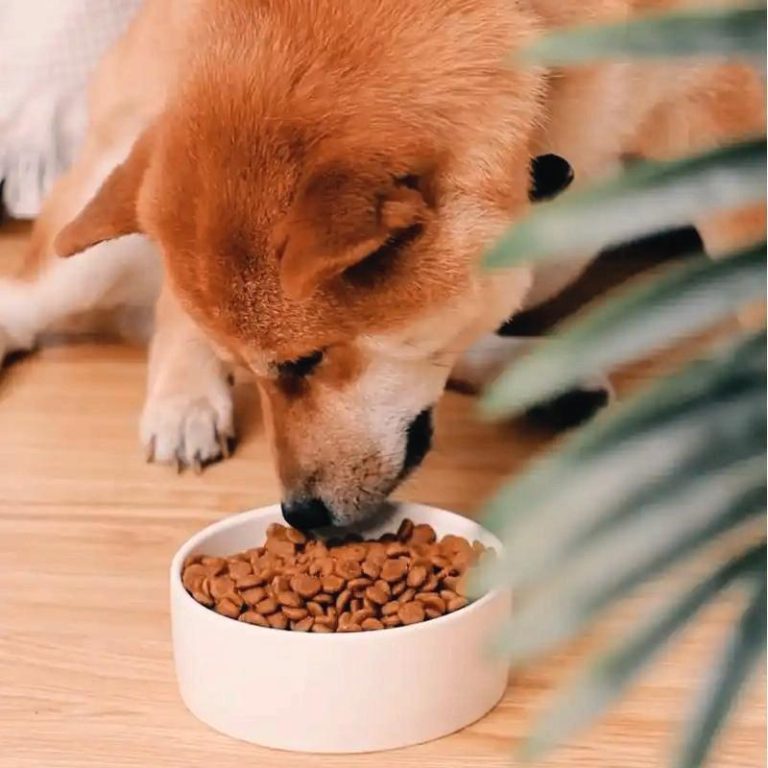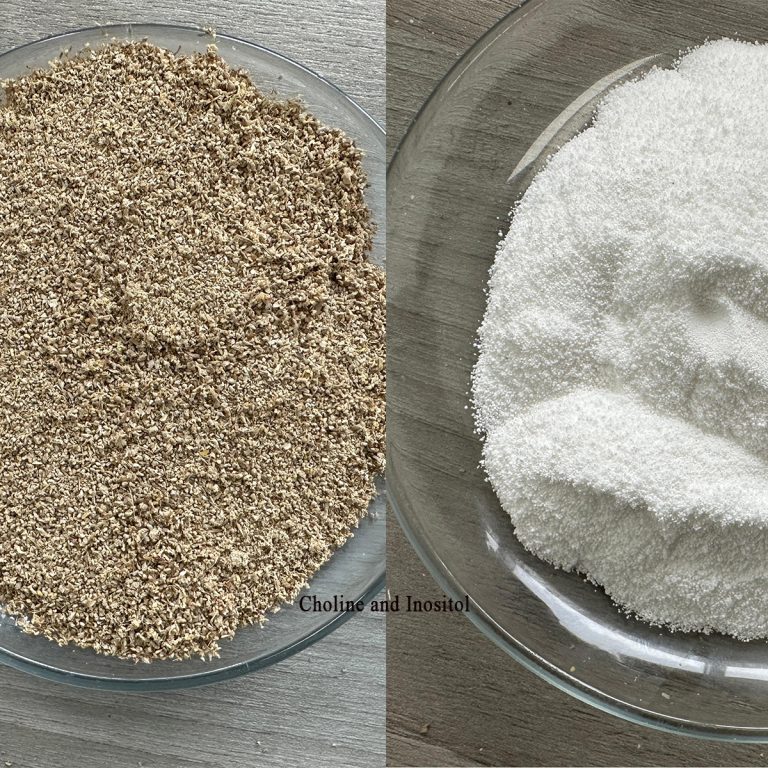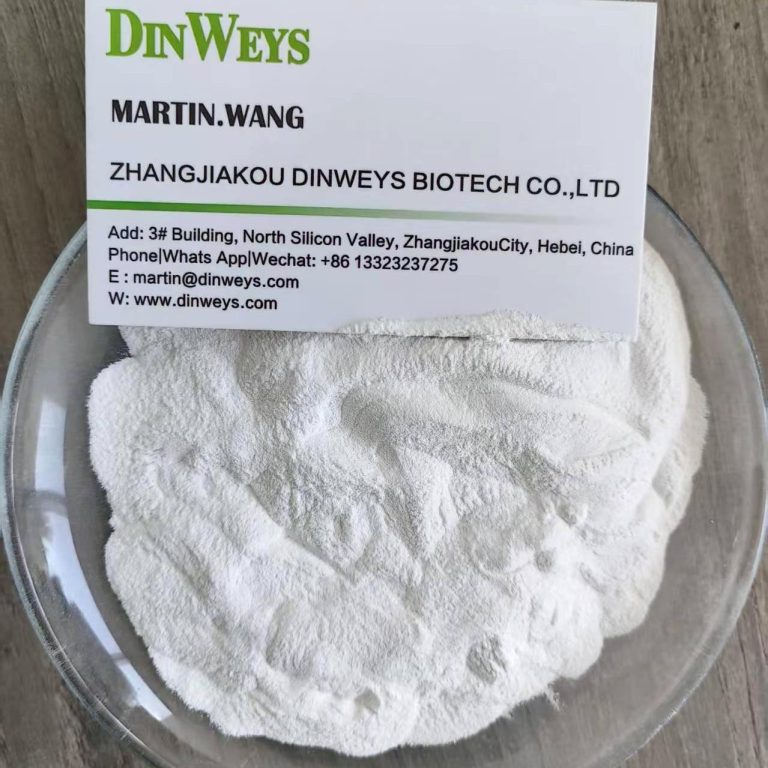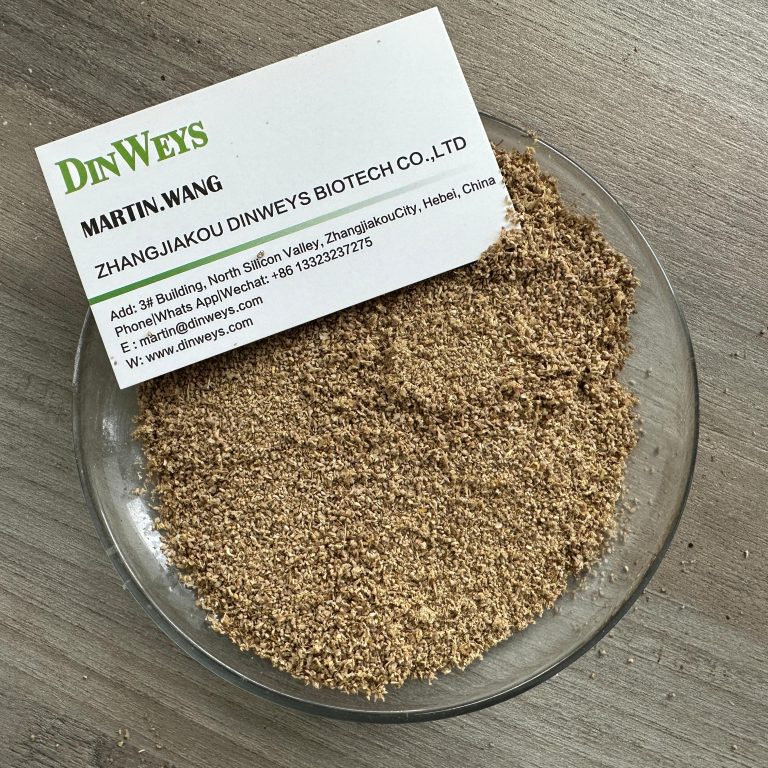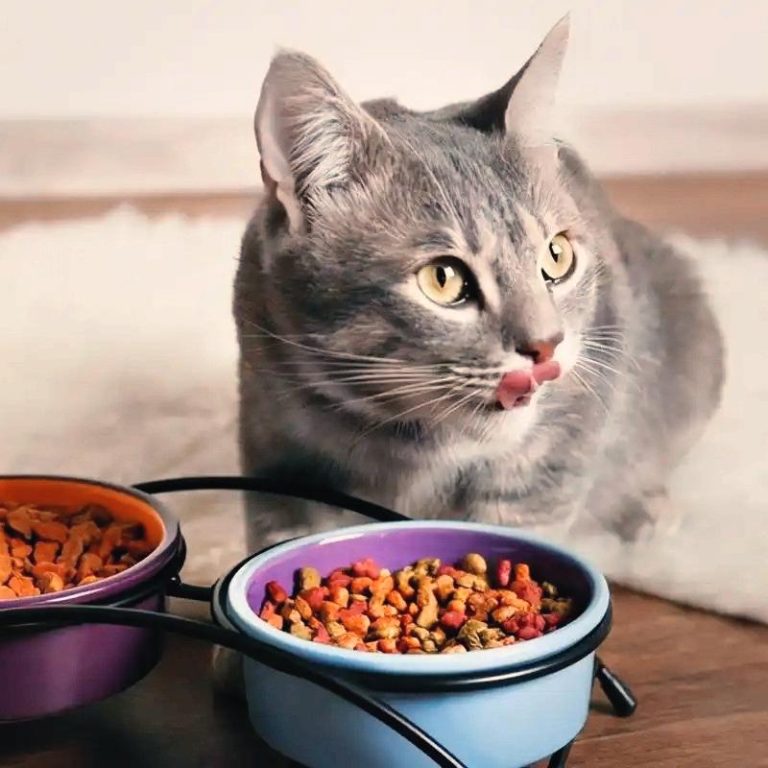Choline Chloride in Poultry Feed
Choline chloride is one of the most widely used nutritional additives in poultry feed. It belongs to the B-complex family of vitamins, functioning as a vital nutrient for cell metabolism, liver health, and growth. Poultry, especially fast-growing broilers and high-yielding layers, have high choline demands that cannot be met solely by endogenous synthesis. As a result, choline chloride has become a cornerstone in modern poultry nutrition and feed formulation.
This article provides a comprehensive analysis of choline chloride in poultry feed: its chemical properties, industrial sources, application levels, dosage control, interactions with other nutrients, and distinctions between food-grade and feed-grade products.
1. Basic Information on Choline Chloride
Chemical properties
Chemical formula: C₅H₁₄ClNO
Molecular weight: 139.63 g/mol
CAS Number: 67-48-1
Appearance: White crystalline powder or colorless hygroscopic liquid
Taste/Odor: Slightly fishy odor, salty-bitter taste
Solubility: Highly soluble in water, hygroscopic in nature
Natural occurrence
Choline exists naturally in:
Egg yolk (1.1–1.4 g/100 g)
Soy lecithin (~3–4% choline by weight)
Animal liver (0.4–0.6 g/100 g)
Meat and fish (0.1–0.3 g/100 g)
Industrial production sources
Commercial choline chloride is synthesized from ethylene oxide and trimethylamine, producing an economical and concentrated additive. For feed applications, it is supplied as:
Choline chloride 50% / 60% corn cob carrier (powder)
Choline chloride 70% silica carrier (powder)
Choline chloride 75% liquid solution
2. Why Choline Chloride in Poultry Feed Matters
Poultry have high metabolic rates and require efficient nutrient utilization. Choline chloride provides several crucial benefits:
Liver protection: Prevents fatty liver syndrome by facilitating lipid transport via phosphatidylcholine and VLDL formation.
Growth and feed efficiency: Enhances weight gain and reduces feed conversion ratio (FCR) in broilers.
Egg production: Improves egg yield, eggshell quality, and yolk development in layers and breeders.
Stress reduction: Plays a role in methyl group metabolism, reducing oxidative stress and supporting immune function.
Recommended inclusion levels in poultry diets (per kg feed):
| Poultry Type | Choline Chloride Requirement* | Practical Inclusion Level |
|---|---|---|
| Broilers (0–6 weeks) | 1,300–1,800 mg/kg | 500–1,200 mg/kg |
| Layers (laying period) | 1,200–1,600 mg/kg | 400–1,000 mg/kg |
| Breeders | 1,600–2,000 mg/kg | 800–1,200 mg/kg |
| Turkeys | 1,600–2,200 mg/kg | 600–1,400 mg/kg |
| Ducks & geese | 1,200–1,800 mg/kg | 500–1,200 mg/kg |
*Based on NRC (1994) and AAFCO (2024) guidelines; actual levels vary with diet formulation and energy-protein balance.
3. Dosage Control and Risks of Choline Chloride in Poultry Feed
If supplementation is insufficient:
Fatty liver, decreased growth, poor feed efficiency
Reduced egg production and weak eggshells
Nervous dysfunction due to a lack of acetylcholine
If supplementation is excessive:
Fishy odor in meat and eggs (trimethylamine accumulation)
Diarrhea and reduced feed palatability
Cost inefficiency without additional performance benefits
How to control dosage:
Choline chloride products differ in concentration; correct adjustment is critical.
| Product Type | Choline Chloride Content | Suggested Inclusion in Feed (per ton) |
|---|---|---|
| 50% Corn Cob Carrier | 500 g/kg | 0.8–2.0 kg |
| 60% Corn Cob Carrier | 600 g/kg | 0.7–1.7 kg |
| 70% Silica Carrier | 700 g/kg | 0.6–1.5 kg |
| 75% Liquid | 750 g/kg | 0.5–1.4 kg |
Example: For broilers requiring 1,000 mg/kg choline chloride, a feed mill using 60% corn cob product would add ~1.6 kg per ton of feed.
4. Synergistic Nutrients with Choline Chloride in Poultry Feed
Choline chloride is often combined with other additives for enhanced effects:
Methionine: Acts as a methyl donor; reduces choline demand for methylation.
Betaine: Provides osmotic regulation and methyl groups, partially replacing choline’s methyl donor function.
Carnitine: Works synergistically in lipid metabolism and energy utilization.
Vitamin B12 & Folic acid: Participate in one-carbon metabolism pathways alongside choline.
Phytase enzymes: Increase the availability of phosphorus and reduce nutrient competition, improving choline efficiency.
| Additive | Function in Poultry | Effect of Choline Chloride |
|---|---|---|
| Methionine | Amino acid, methyl donor | Reduces choline methyl demand |
| Betaine | Osmoregulation, methyl donor | Supports heat stress tolerance |
| Carnitine | Fatty acid transport | Enhances lipid metabolism |
| Vit B12 / Folate | One-carbon metabolism | Improves methylation balance |
| Phytase | Nutrient release | Improves utilization of choline and other nutrients |
5. Food-Grade vs. Choline Chloride in Poultry Feed
Choline chloride exists in two main commercial categories:
| Aspect | Food-Grade | Feed-Grade |
|---|---|---|
| Purity | ≥98%, pharmaceutical or human use | 50–75%, with carriers |
| Carrier | None or food-compatible excipients | Corn cob, silica, or liquid solutions |
| Applications | Dietary supplements, infant formula, functional foods | Poultry, swine, ruminants, aquaculture, pets |
| Price | High, due to strict GMP and food safety | Economical for bulk feed production |
Feed-grade products are not suitable for direct human consumption, but remain the standard in poultry nutrition due to cost-effectiveness and formulation flexibility.
6. Practical Applications and Industry Implications
The Data of Choline Chloride in Poultry Feed:
6.1 Impact on Growth and Feed Efficiency
Broiler trials in China (2019, n=12,000 birds): Birds supplemented with 1,200 mg/kg choline chloride (60% corn cob carrier) showed an 8.5% improvement in average daily gain (ADG) and a 6.2% lower feed conversion ratio (FCR) compared to control groups without supplementation.
Macro-economic implication: For a 10,000-bird farm, reducing FCR from 1.70 to 1.60 can save approximately 8–10 tons of feed per production cycle, translating into $3,000–$4,000 in cost savings depending on corn-soy feed prices.
6.2 Egg Production and Reproductive Performance
Layer hens (India, 2020 study, 800 hens): Supplementation of 900 mg/kg choline chloride increased egg production rate by 5.4% and improved eggshell thickness by 12%, reducing egg breakage losses by almost 9%.
Breeder flocks (Brazil, commercial farm data): Diets with 1,500 mg/kg choline chloride led to higher fertility rates (3–4%) and improved hatchability, which is critical for integrated poultry operations.
6.3 Meat and Egg Quality
Supplementation helps reduce hepatic fat deposition, lowering the risk of fatty liver hemorrhagic syndrome in layers.
Choline also influences yolk size and pigmentation, contributing to consumer-preferred egg quality in Asian and European markets.
Meat quality improves due to reduced abdominal fat and better muscle development. For broilers, studies have shown a 15–20% reduction in carcass fat when adequate choline chloride is included (Sharma et al., 2018).
6.4 Stress and Mortality Reduction
Heat stress conditions (Thailand, 2021 commercial farms): Broilers receiving choline chloride + betaine showed 30% lower mortality during peak summer months compared to unsupplemented groups.
Choline’s role in osmoregulation and methyl metabolism helps poultry withstand oxidative stress, improving overall flock resilience.
6.5 Industry-Level Implications
Global scale: According to FAO and industry reports, poultry feed accounts for nearly 40% of global compound feed production, and choline chloride is one of the top three most used vitamins/additives by tonnage.
Market size: The global choline chloride market for animal feed was valued at ~$1.3 billion in 2023, with poultry representing over 55% of total demand (MarketsandMarkets, 2023).
Cost–benefit ratio: Research consistently shows that every $1 spent on choline chloride supplementation yields $3–5 in return through improved feed efficiency and productivity.
Summary of Practical Advantages
| Benefit | Micro-Level Impact (Farm) | Macro-Level Impact (Industry) |
|---|---|---|
| Growth & FCR | +6–9% growth, -5–7% FCR | Reduced feed use by millions of tons globally |
| Egg yield | +5–7% egg production, stronger shells | Higher egg supply, lower breakage losses in logistics |
| Reproduction | +3–4% fertility & hatchability | More efficient breeder operations |
| Carcass quality | 15–20% less fat, better muscle | Improved meat yield, higher consumer acceptance |
| Stress tolerance | -20–30% mortality in heat stress | More stable production in hot climates |
Data sources:
- The Effect of Choline Chloride on the Performance of Broiler Chickens
- Choline Chloride Market Size – By Grade (50%, 75%, 70%, 60%, 98%), By Form (Powder, Liquid), By Application (Oil & Gas, Human Nutrition, Personal Care, Pharmaceuticals, Animal Feed), Growth Prospects, Regional Outlook & Forecast, 2024 – 2032
Summary
Choline Chloride in Poultry Feed is indispensable, ensuring optimal growth, liver health, feed efficiency, and reproductive performance. Proper dosage control, attention to product type, and synergistic use with other nutrients such as methionine and betaine are crucial for maximizing benefits while avoiding risks.
For poultry feed formulators and integrators, understanding the distinctions between food-grade and feed-grade choline chloride and carefully adjusting inclusion rates according to species and production stage can translate into significant economic gains and healthier flocks.
References
National Research Council (NRC). (1994). Nutrient Requirements of Poultry. Washington, DC: National Academies Press.
National Research Council (NRC). (2006). Nutrient Requirements of Dogs and Cats. Washington, DC: National Academies Press.
Sharma, R., Kumar, V., & Kumar, A. (2018). Importance of choline in animal nutrition: A review. International Journal of Livestock Research, 8(9), 1-14.
Zeisel, S. H., & da Costa, K. A. (2009). Choline: An essential nutrient for public health. Nutrition Reviews, 67(11), 615–623.
Association of American Feed Control Officials (AAFCO). (2024). Official Publication. Champaign, IL.


